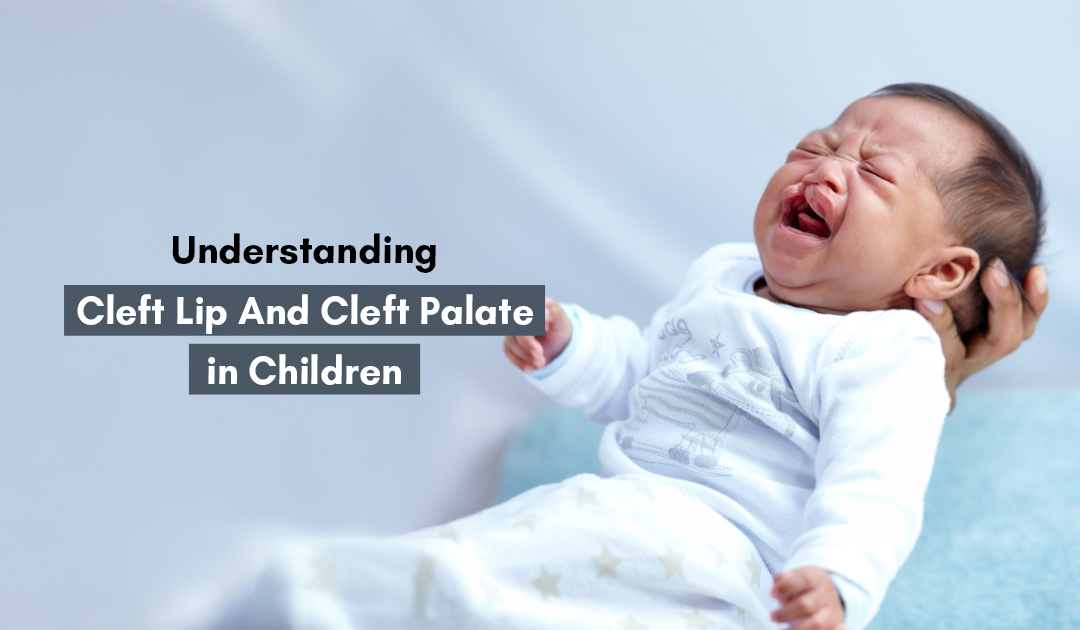When an unborn child’s upper lip and palate don’t close completely while the development occurs, the child ends up with a cleft lip or cleft palate. The affected area is the openings or splits in the upper lip, the roof of the mouth, also known as palate or both. This condition is extremely common, occurring on its own or together with other conditions. They are one of the most common birth defects and can be corrected with treatments and surgeries. After getting operated on by a series of surgeries, the cleft lip and cleft palate look as they did before and have minimal scarring in the end.
What are the Symptoms of a Cleft Lip/Cleft Palate?
At birth, a split (cleft) in the lip or palate is typically visible immediately. In a prenatal ultrasound, it could be discovered prior to delivery. Cleft palate and cleft lip can appear as follows:
- One or both sides of the face may be affected by a lip and palate split.
- A lip split that either starts as a tiny lip notch or spreads from the lip into the palate and upper gums before entering the nose’s base.
- The appearance of the face is unaffected by a split in the roof of the mouth.
It is less likely that a cleft only develops in the soft palate muscles, which are located behind the mouth and covered by the lining of the mouth. Healthcare professionals refer to this as a submucous cleft palate. This kind of cleft might not be noticeable at birth, and it might not be identified until later, when symptoms below start occurring:
- Having trouble eating.
- Speaking in a nasal tone.
- Constantly occurring infection of the ears.
- Having trouble swallowing, in rare cases.
- Foods or liquids emerging from the nose.
What are the Causes of Cleft Lip or Cleft Palate?
Cleft lip or cleft palate usually occurs when the tissues in the unborn baby’s face and mouth during healthy progression don’t get formed correctly. Generally, the tissues forming the lip and palate get together in the first few weeks of pregnancy. However, the babies with a cleft lip or cleft palate don’t have both the lip and palate together or have them only halfway there, which leads to an opening. The main cause of this is not known, as both genetics and environment play a role in a baby’s development.
What are the Factors of a Cleft Lip and Cleft Palate?
Many factors may cause a cleft lip and cleft palate in the child which may include:
- Babies having a family history of cleft lip or cleft palate may end up developing it.
- Exposure to substances like tobacco, consuming alcohol, or taking specific medications may lead to the child developing a cleft lip or cleft palate.
- Lack of vitamins in pregnancy, such as not having adequate amounts of folate in the body during the first trimester of pregnancy, may increase the chances of the unborn child developing a cleft lip or cleft palate.
- Gender plays an important role as well, where men are more prone to developing a cleft lip than women.
- Race or ethnicity also determines the likelihood of developing a cleft palate. People that are Native American or Asian heritage are more prone to developing a cleft palate than people with African American heritage.
How to Treat a Cleft Lip or Cleft Palate?
An important intervention for treating a cleft lip and palate is reconstructive, which is targeted towards restoring the regular functioning and appearance of the affected area. A cleft lip is a congenital condition where there is a split or opening in the upper lip, while a cleft palate consists of an opening in the roof of the mouth. These conditions may lead to issues in eating and speech and may even encounter dental and oral problems.
The treatment in reconstructive surgery usually occurs in stages:
Stage 1: First Surgery: This is generally performed when the child is around 3 to 6 months old for the cleft lip, which assists in enhancing the look and appearance of the lip, allowing feeding.
Stage 2: The Repair: The cleft palate usually gets repaired between 9 and 18 months of age. This surgery includes closing the gap in the palate. This step is extremely important as it allows for the progression of normal speech.
Stage 3: Post-surgery: In this stage, the children may go for speech therapy and need follow-up care to monitor their improvement and development. The success of these surgeries significantly improves the overall quality of life for affected individuals, giving them a chance to lead more normal lives with enhanced speech and social meetings and conversations.
All in all, reconstructive surgery for cleft lip and palate is an important aspect of multidisciplinary care that looks at both functional and aesthetic concerns.
Request an appointment today for more queries and personalized assistance.

